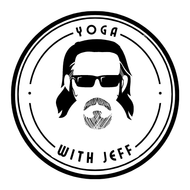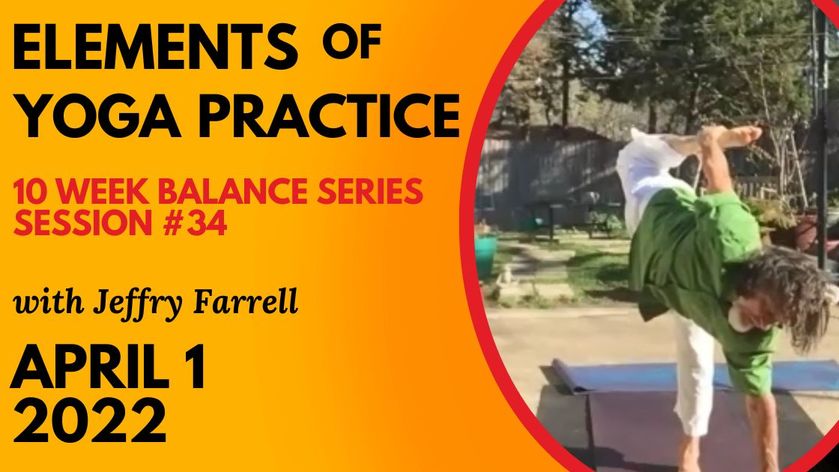It's really a video not an article. . . . And it is the captured video of one Salute sequence originating with one side.

We enter the new year observing four principles of progress: Shtira, Sankalpa, Sukha, Dukha.
Shtira is a unified wholeness. It observes balance, strength, alignment, breath, and three planes of engagement. It is neither passive nor aggressive. It is the alert wholeness and fulfillment of every posture. Shtira can be present whether you stand or sit, kneel, lie on you back, in every starting position that you find yourself. When we recognize Shtira then we set our intention, Sankalpa.
Sankalpa is to decide our movement, our direction. To de-cide means to “cut away.” We cut away everything except our intent. It is a concentration. We decide and concentrate to move, to carry our Shtira. To carry Shtira well is to move with grace, with the appropriate energy required, with an effortless effort we call Sukha.
Sukha is the effortless effort. It carries wholeness. It uses not too much energy nor does it try with insufficient strength. Of course, as we begin we may drop Shtira. We may feel awkward or imbalanced and weak. However, we begin. We find Shtira and carry, and go back to Shtira and carry again. The difficulties, the resistance, the limitations are called Dukha, or pain. Pain is the teacher to awaken the Shtira.
We move in three planes, open the lymphatics, mobilise the joints all with breath. Let your lungs fill, let the breath fill the posture, every inhale awakens and identifies, every exhale liberates.
Ok! Come on in. . . .
This is a video of the left side initiating movement in a Salute to the Sun sequence.
Breath is first. It activates stability and sensation, strength, balance, and an active but receptive mind. Then, move.
Congratulations! You are about to complete the first chapter and the first series of one minute videos.
There are several positions with inter-laced fingers. Do this one first and breathe nine deep breaths. If you cannot do this, nevermind. And accept the completion of the first chapter! You are prepared to go on to Chapter II which is the first sequence for Breath.
We will come back to Laced Fingers again in a subsequent chapter.
I will add specific series for laced fingers witih arm movement in future uploads. Every position has many variations. Every position begins with breath, stability, and wholeness. In every position we set our intention and move, guided by breath. The work is an effortless effort that confronts pain and learns.
This video completes the initial series of nine short videos to awaken the upper body.
IF YOU STARTED HERE GO BACK LIKE SHOOTS AND LADDERS TO THE FIRST VIDEO —
I. Standing A.) Arms, Shoulders, Neck 1.) Open/close the fist....
From a standing upright position, maintain stable and unmoving shoulders as best you can.
Isolate the head’s movement with a nod forward and back. Hinge the head forward and back. Inhale back, exhale forward. Make at least three reps of nodding “yes.”
Return to center. Turn the whole head right and then left. Turn the chin and forehead equally. Turn your eyes deeply back, too. First breath is to exhale over your shoulder. Make at least three reps of “no.”
Return to center. Tilt the head to one side. Pretend you could lift the ear up into the sky. Stay there and breathe. Feel the dilation in that side fo the neck. Feel the compression on the opposite side. Take three breaths on each side. Make three reps of “maybe.”
Return to center and make a circle with the top of your head. Turn the head three times to the right, then reverse three times. Every circle is a breath.
HOW TO USE THIS VIDEO SERIES:
Please watch the video then make the movement. Make at ...
If you have any questions about payments, text Donna at 214-663-3991.
~Group class rate if you have joined the Locals online group at the FREE level: $30. Click here to pay: https://buy.stripe.com/cNi28qemN5q0bDldWzf3a0j
~Group class rate for Locals supporters at the $5-$14/month level: $20
Click here to pay: https://buy.stripe.com/8wM16A10Rg249fW8wD
~Group class rate for Locals supporters at the $15-$59/month level: $15
Click here to pay: https://buy.stripe.com/cN25mQ7pf7vy2Ry6ow
~Group class rate for Locals supporters at $60 and above: FREE
I like this guy’s work online. He’s been around for a while and speaks so plainly about the body’s maps, functions, that you’re sure to like him, too.















